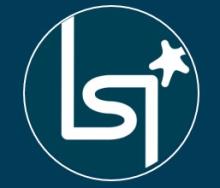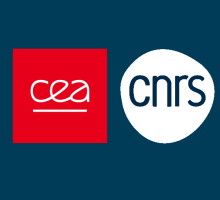Presentation
The "Irradiated Solids" laboratory name comes from the history of the unit, strongly influenced by the study of irradiation effects on materials for nuclear. The name still refers to the thematic always developed at LSI, which include the study of excitations in solids, the modification of materials and their properties by controlled introduction of defects, the use of defects as a probe of the fundamental state, and nanomaterials obtained and/or structured by irradiation.
The LSI (Irradiated Solids Laboratory) is a joint research unit of the CEA, the CNRS and the Ecole polytechnique. Concerning the CEA, it is attached to the Fundamental Research Division (DRF), Saclay Institute of Matter and Radiation (IRAMIS). Concerning the CNRS, it mainly depends on the Institute of Physics (INP), and secondarily from the Institute of Chemistry (INC). LSI is attached to the Sections of the national committee 3, 5 (main section) and 11.
The laboratory is located on the site of the Ecole polytechnique. One LSI researcher is installed on the CEA Saclay (laser platform IRAMIS).
On January 1st, 2015, the overall permanent staff of the LSI is composed of 72 people, including 17 from CEA , 16 from CNRS, and 9 from Ecole Polytechnique. The laboratory also hosts 15 PhD students and postdocs 9.
The mission of Irradiated Solids Laboratory is the study of fundamental properties of the solid state and its various interactions with radiation (photons, electrons, ions), in the multiple goals:
- Understand the key factors determining the response of materials to radiation
- Check the structural modification of (nano)materials
- Induce the emergence of new properties (and pilot them)
- Develop materials for the needs of industry and society
For this, the LSI develops:
- Innovative approaches of irradiation defects and characterization
- New methods for the synthesis of (nano)materials
- New theory
- Experimental tools for studying the ground state, the excitation and transport phenomena
A strong component of the laboratory is its multidisciplinary approach, which allows the development of transverse projects on materials. The ratio theory / experiment in the laboratory is about 1/3, and the possibility of exchanges between theorists and experimentalists is one of the treasures of the laboratory.
The LSI activities
The laboratory research activities are structured in five groups:
- Theoretical Spectroscopy
- Materials Science Theory
- Dielectrics, Glasses and Complex Ceramics
- New Electronic States
- Physics and Chemistry of Nano-Objects
The theoretical spectroscopy group is the Centre for Users and Technology of the European Theoretical Spectroscopy Facility (ETSF), working like a large experimental facility, and carries out its vice presidency. The ETSF is supported by the European Union at the European level, and by the LSI institutions at the local level.
The LSI just renewed its electrons irradiation installations, with the SIRIUS project (Système d'IRradiation pour l'Innovation et les Utilisateurs Scientifiques). Funding for this project is supported by the region Ile de France (SESAME), the Ecole polytechnique, and the CEA (DSM et DEN). At the end of 2010, the installation will be open to external users, and the LSI will therefore be reception laboratory for electrons irradiations. As such, the LSI is member of the national network of d'accelerators for materials irradiation EMIR.
Support to experiments and to the accelerator is provided by a team of technical and accelerator support, with an engine shop, a design office and competences in cryogenics.
The LSI has different experimental equipments, in particular: a spectroscopy plateform (RPE, optical spectroscopies), low temperature local magnetometry equipements (magnéto-optic, hall effect microprobes), a chemical synthesis laboratory, as well as a transmission electron microscopy center (CIMEX), shared with other Ecole polytechnique laboratories.
The LSI contributes to the FemtoARPES project, with the LPS, LOA, and SOLEIL partners. This project aims to mesure the electronic states in condenced matter out of equilibrium, implementing time resolved photoemission. In the experiment, a femtoseconde laser (pump) is used to disrupt a sample and excite the cristallin network as well as the electronic structure. A second ultraviolet beam (probe) will cause electrons photoemission, which will be analysed by high resolution spectroscopy of the photoelectrons résolue angulairement (ARPES). This experimental operation was recently built at the synchrotron SOLEIL and the first experiments are being carried out.
Several professors of the Ecole polytechnique are carrying out their research activities at the LSI. Some other LSI researchers are also involved in training activities in engineering schools or in Masters. Furthermore, the LSI hosts students in the framework of experimental modules of the polytechnic cycle (MODEX), as well as in different Masters.
The laboratory receives funding from the French agency ANR, the local agency RTRA Triangle de la Physique, the Ile-de-France Region (C'Nano, SESAME), CEA funding programmes, the European Union (FP7), CNRS international programmes, the French governemental adgency DGA, as well as from intustry.


